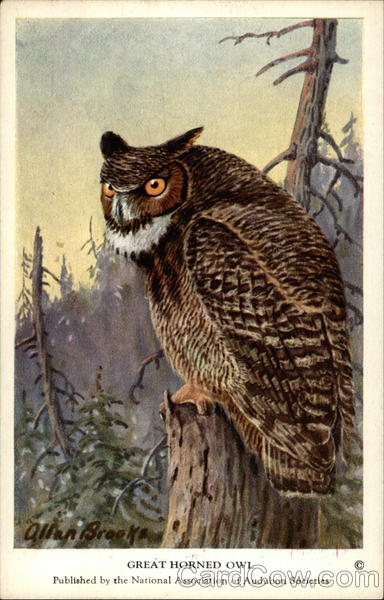Front:
aianBreet
GREAT HORNED OWL
Published by the National Association of Audubon Societies
Back:
No. 18 Great Horned Owl
Length 22 inches
This Owl, conspicuous from its ear-tufts, which
are nearly two inches long, as well as from its
large size and mottled appearance, is found in the
more heavily wooded and wilder regions of our
country. Often on still winter nights its monoto-
nous whoo-hoo-hoo-hoo may be heard a mile or
two away.
It is a powerful, skillful hunter, and frequently
causes great losses through its nightly szolgantly
on
some favorite poultry yard. It is alsox now and
aris anter
been almost wholly beneficial, as ju portions of the
West where the rabbit has become a pest, or in
regions where rats are unusually destructive. “Of
127 stomachs examined, 439 contained poultry or
game birds; 8, other büds; 13, mice; 65, other
mammals; 1, scorpion 1, fish ; 10, insects; and 17
were empty
The nest of the Great Horned Owl is usually
well up in a tree, generally in the old nest of a
Squirrel, Crow or Hawk. Two or three white
eggs are laid.
Classification: Order Raptores. Family Strigide.
Scientific name: Bubo virginianus.
Range: In its varying forms over most of the United
States and Canada and southward to Patagonia.
No. 18 from set of 50 Winter Birds of the Northeastern United
States. Published by the National Association of Audubon So-
cieties, 1974 Broadway, New York City. Price per set, in a box,
$1.00 post paid.



